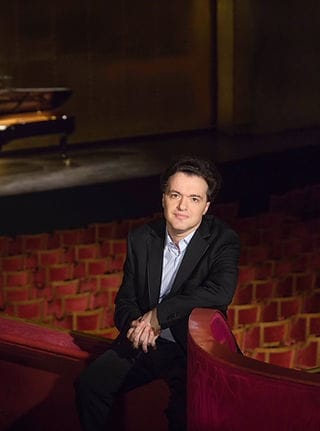
Bach, Chopin, Shostakovich Evgeny Kissin (piano). Barbican Hall, London, 25.06.2025
Bach Partita No. 2 in C minor, BWV 826
Chopin Nocturnes: C sharp minor, Op. 27/2; A flat, Op. 32/3. Scherzo No. 4.
Shostakovich Piano Sonata No. 2. Preludes & Fugues, op. 87: No. 15 in D flat; No. 24 in D minor
Over the years, Evgeny Kissin’s playing seems to have mellowed. The technique remains effectively superhuman, but there is now a humanity projected alongside the notes. Perhaps his platform manner remains a touch awkward, but there is no doubting this was playing from a top-flight pianist.
A top-flight pianist not normally associated with Bach, perhaps. Interesting that he began the Second Partita’s Sinfonia with absolutely equally-weighted hands; the opening of the faster section was another exercise in equivalence, this time in voicing, the left-hand beautifully mezzo-staccato against the fluidity of the right. But Kissin did rather over-compensate and over-project, and even over-pedal at one time. If the Courante felt a little hard-pressed, the Sarabande offered some respite (although does Kissin ever go below mezzo-forte? was a thought that crossed my mind). Here was some fine ornamentation, though. Interesting how there was a sense of play to the Rondeau before the robust Capriccio found Bach’s lines playing cat-and-mouse effectively.
Mixed Bach, then, which owed something to Gould, and something to Argerich. And nice to have the first of the Op. 27 Chopin Nocturnes for a change. The first of the set is interesting in that one can hear the Bellini-like lines, but here against harmonies that ere more mysterious than its opus-partner, the D flat Nocturne, Op. 27/2 – Kissin seemed to steer us towards much late Chopin. And it is quite a way from C sharp minor (four sharps) to A flat major (four flats). The first chord certainly was arresting in this context. It contained the first real piano of the evening, a fascinating performance of sweetly-delivered reverie.
The Fourth Scherzo is often considered the odd-one-out of the pack, quixotic one moment ruminative the next. Kissin made a superbly persuasive case while delivering a legerdemain only known to the most top-tier of pianists. So, with Chopin, Kissin arrived.
Celebrating the Shostakovich anniversary (50 years since the Great Man’s death), Kissin set the rarely-heard Second Sonata against two Preludes and Fugues from Op. 87, including the momentous final D minor. The Second Sonata achieved some measure of fame through Gilels’ RCA recording. It is a tough play, and a touch listen, for sure, and it requires someone who truly understands the composer’s mode of expression. Kissin is one such, able to evoke a sense of exaltation. Registral separations between hands feel perfectly natural; there was an interpretative fluency here that was utterly convincing. The Largo is even more sparse, and Kissin gave it all the space it needed (to a largely silent, packed audience). The final is marked Moderato (con moto), a place of suspended animation almost before counterpoint launches momentum; a hint at the final two Preludes and Fugues, perhaps. This is a remarkable movement in a remarkable sonata. I will be lucky to hear a greater. performance of this (lucky maybe, to even hear another performance! Perhaps Kissin’s advocacy will sow some seeds?).
Here’s a live performance by Emil Gilels, recorded in 1965, and with rolling score:
The slight D flat Prelude and Fugue in D flat (No. 15 of Op. 87) begins in characteristic Shostakovich fashion, certainly jaunty here; and how Kissin relished the disruptive accents. Under Kissin’s hands, it sounded like an orchestral reduction; the even slighter Fugue scampered like a wayward gigue. The D minor Prelude and Fugue, meanwhile, is huge (well over ten minutes). Kissin reminded us of the Bachian aspects here, the grandeur of the opening harkening back to the Partita that launched the evening. Kissin allowed the Prelude to morph into the fugue beautifully, too; later, he conjured up an organ on the piano. This was truly commanding playing of what is so clearly a masterwork.
Kissin remains a force to be reckoned with. Two encores, one substantial. A graceful Siciliano from the E flat Flute Sonata, BWV 1031 in, I believe, the Wilhelm Kempff arrangement, and a titanic account of Chopin’s B flat minor Scherzo, Op. 31.








